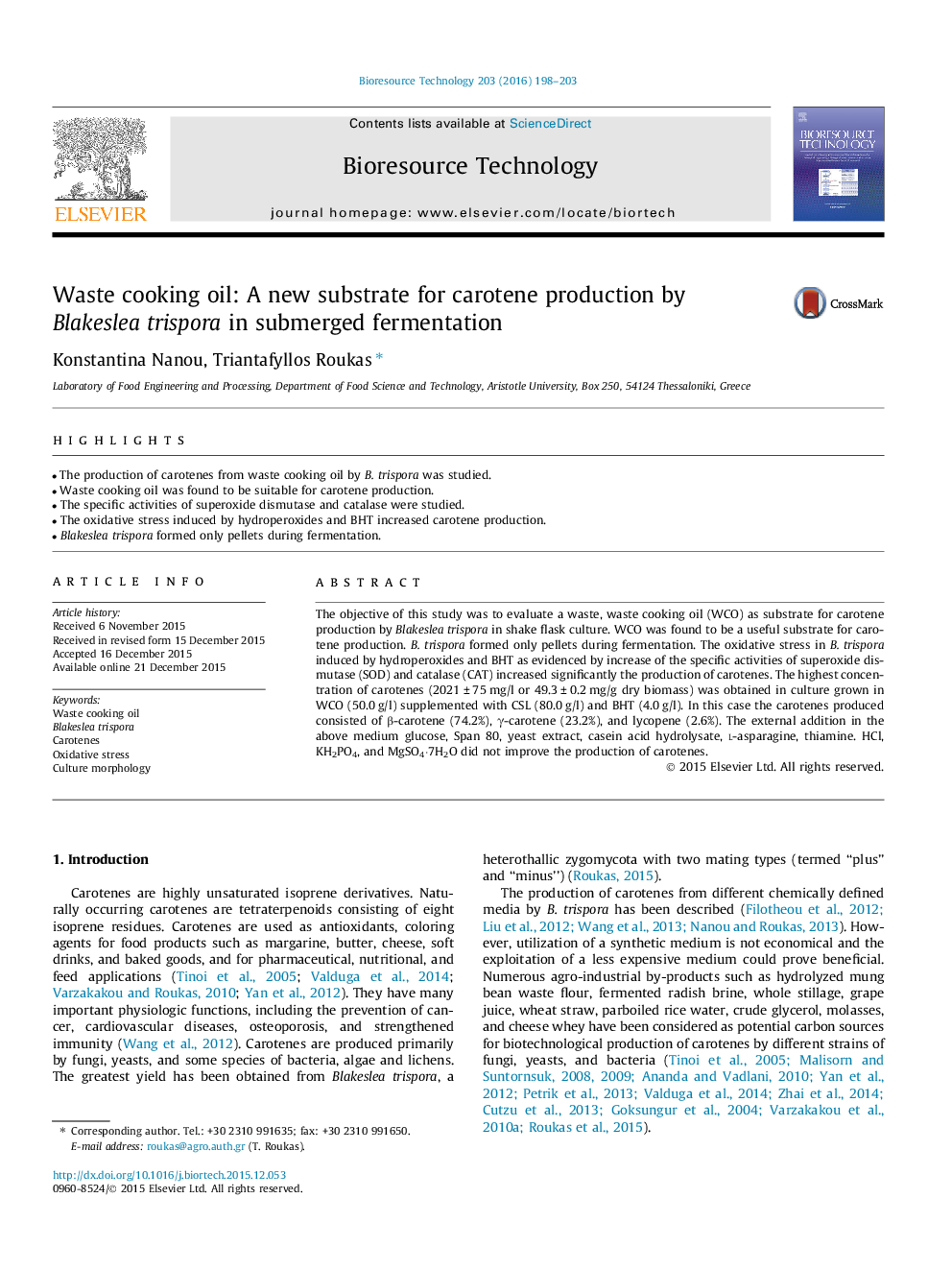| Article ID | Journal | Published Year | Pages | File Type |
|---|---|---|---|---|
| 7072444 | Bioresource Technology | 2016 | 6 Pages |
Abstract
The objective of this study was to evaluate a waste, waste cooking oil (WCO) as substrate for carotene production by Blakeslea trispora in shake flask culture. WCO was found to be a useful substrate for carotene production. B. trispora formed only pellets during fermentation. The oxidative stress in B. trispora induced by hydroperoxides and BHT as evidenced by increase of the specific activities of superoxide dismutase (SOD) and catalase (CAT) increased significantly the production of carotenes. The highest concentration of carotenes (2021 ± 75 mg/l or 49.3 ± 0.2 mg/g dry biomass) was obtained in culture grown in WCO (50.0 g/l) supplemented with CSL (80.0 g/l) and BHT (4.0 g/l). In this case the carotenes produced consisted of β-carotene (74.2%), γ-carotene (23.2%), and lycopene (2.6%). The external addition in the above medium glucose, Span 80, yeast extract, casein acid hydrolysate, l-asparagine, thiamine. HCl, KH2PO4, and MgSO4·7H2O did not improve the production of carotenes.
Related Topics
Physical Sciences and Engineering
Chemical Engineering
Process Chemistry and Technology
Authors
Konstantina Nanou, Triantafyllos Roukas,
